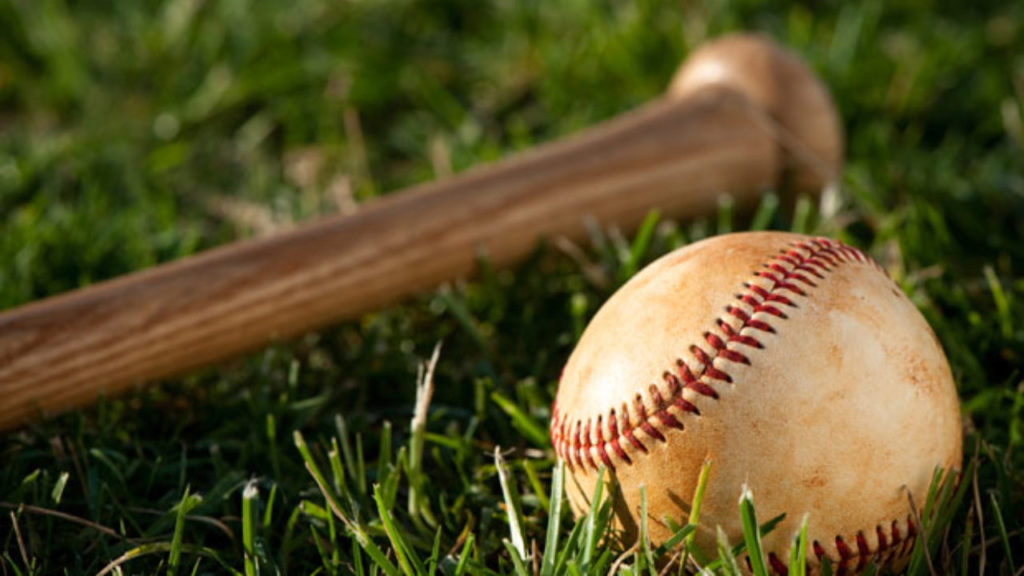Table of Contents
MORE BASEBALL BIOGRAPHIES
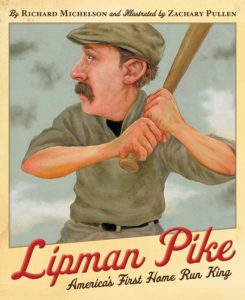
|
Richard Michelson’s Lipman Pike: America’s First Home Run King (Sleeping Bear Press, 2011), a National Jewish Book Award finalist, is a beautifully illustrated (by Zachary Pullen) slice of little-known baseball history. Lip, the son of an immigrant shopkeeper in Brooklyn in the mid-1800s, is known as the first “professional” baseball player. The book combines an account of Lip’s life and career with stories of the early days of baseball and the often difficult Jewish immigrant experience. For ages 5-8. |
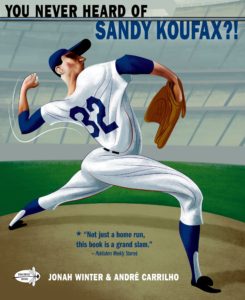
|
Jonah Winter’s You Never Heard of Sandy Koufax? (Schwartz & Wade, 2009) is the picture-book story of the extraordinary pitcher for the Brooklyn Dodgers who struggled with discrimination because he was a Jew. For ages 5-9.
Also by Winter, see You Never Heard of Willie Mays? (2016). |
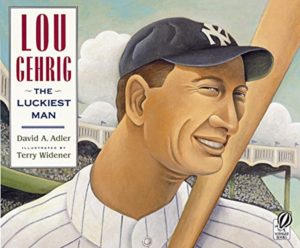
|
David A. Adler’s Lou Gehrig: The Luckiest Man (Sandpiper, 2001), with wonderful illustrations by Terry Widener, is a simple biography of the indomitable baseball player who came to be nicknamed the “Iron Horse.” For ages 5-9. |
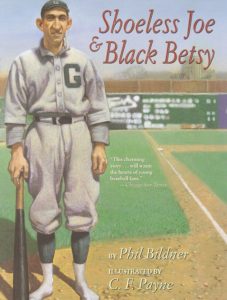
|
Phil Bildner’s Shoeless Joe & Black Betsy (Simon & Schuster Books for Young Readers, 2006) is the picture-book story of how baseball player Joe Jackson – stuck in a hitting slump – goes to the “finest bat smith in South Carolina” for the wonderful bat he names Betsy, made of hickory and rubbed down with tobacco juice. An afterword has a more detailed biography of Jackson, including a brief account of the 1919 Black Sox Scandal. For ages 5-9. |
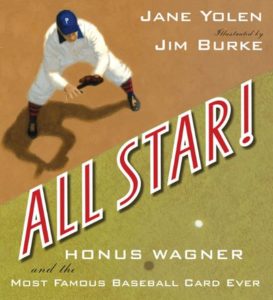
|
Jane Yolen’s All Star! Honus Wagner and the Most Famous Baseball Card Ever (Philomel, 2010) is a picture-book biography in verse of the famous Pittsburgh Pirates player who began his career shoveling coal in the Pennsylvania mines. His rare baseball card sold for three million dollars at an auction in 2007. For ages 6-11. |
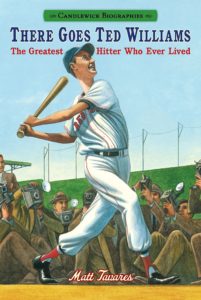 |
By Matt Tavares, There Goes Ted Williams (Candlewick, 2012) is a terrific picture-book biography of “The Greatest Hitter Who Ever Lived” with beautiful illustrations. For ages 6-11. |
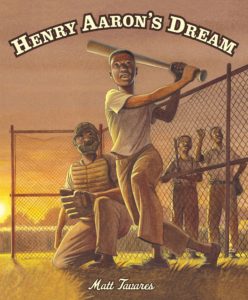
|
Also by Tavares, Henry Aaron’s Dream (Candlewick, 2012) traces Aaron’s days from his boyhood in Alabama, playing in the yard with a broomstick bat – the baseball field was for whites only – through his years with the Negro Leagues and his debut with the Milwaukee Braves. For ages 6-11. |
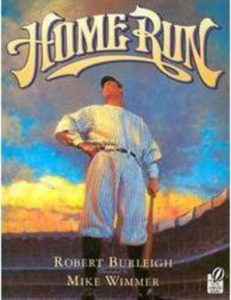 |
Robert Burleigh’s Home Run: The Story of Babe Ruth (Sandpiper, 2003) is a lovely free-verse-style biography of Babe Ruth – a.k.a. the Sultan of Swat – illustrated with impressive oil paintings by Mike Wimmer. For ages 6-10. |
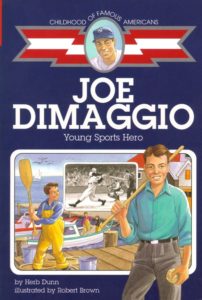
|
The Childhood of Famous American series (Aladdin), a collection of short chapter biographies for ages 8-11, includes several biographies of famous baseball players. Titles include Babe Ruth: One of Baseball’s Greatest (Guernsey Van Riper, 1986), Joe DiMaggio: Young Sports Hero (Herb Dunn, 1999), Lou Gehrig: One of Baseball’s Greatest (Guernsey Van Riper, 1986), Jackie Robinson: Young Sports Trailblazer (Herb Dunn, 1999), and Roberto Clemente: Young Ball Player (Montrew Dunham, 1997). |
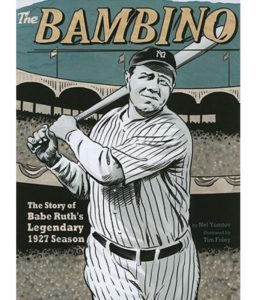 |
Nelson Yomtov’s The Bambino (Capstone, 2011) in the American Graphic Novel series is a comic-book-style account of Babe Ruth and the fabulous baseball season of 1927. For ages 8-12. |
PLAYING THE GAME
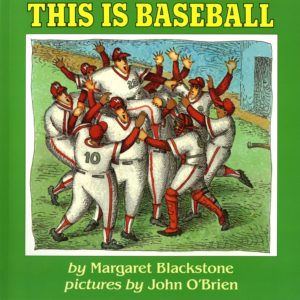
|
Margaret Blackstone’s This Is Baseball (Henry Holt and Company, 1997) is a simple and charmingly illustrated introduction to baseball for beginners. (“This is a stadium…and this is a baseball diamond.”) For ages 3-6. |
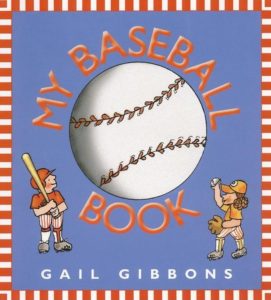 |
Gail Gibbons’s My Baseball Book (HarperCollins, 2000) is a straightforward introduction to baseball with a simple text and big bright illustrations (among them a nice diagram of a baseball diamond). For ages 4-7. |
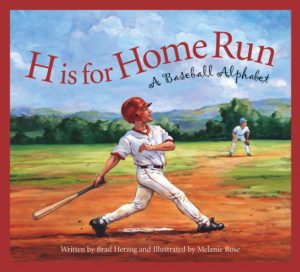
|
Brad Herzog’s H is for Home Run (Sleeping Bear Press, 2004) has a (somewhat labored) rhyming scrap of baseball information for each letter of the alphabet, beginning with “A is for all stars/baseball’s acrobatic aces/who throw and catch and hit/and run around the bases.” One of a series of sports-themed alphabet books for ages 4-8. Other titles include T is for Touchdown, J is for Jumpshot, and K is for Kick. |
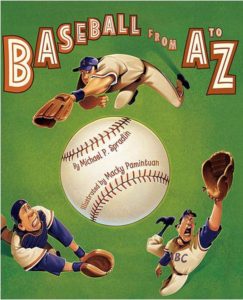
|
Michael P. Spradlin’s Baseball from A to Z (HarperCollins, 2010) is a wittier approach to the baseball alphabet, largely due to Macky Pamintuan’s exaggerated and comical illustrations. Each letter is accompanied by a baseball factoid. For ages 4-8. |
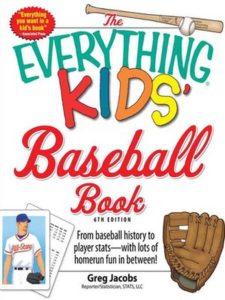
|
Greg Jacobs’s The Everything Kids’ Baseball Book (Adams Media, 2010) is a nicely designed, 176-page compendium of all things baseball, from the rules of the game through baseball history, team-by-team tours of the National and American Leagues, biographies of famous players, statistics and records, and instructions for keeping score. Included are “Words to Know” and “Fun Facts” in sidebars and boxes. For ages 9 and up. |
| How Baseball Works covers the rules of the game, baseball equipment, the layout of the baseball diamond, the roles of the players, and more. Illustrated with photographs and diagrams. |
THE SCIENCE OF BASEBALL
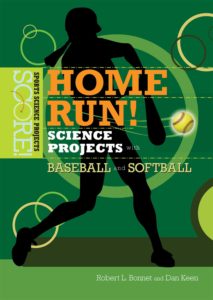
|
Home Run! The Science of Baseball and Softball by Robert Bonnet and Dan Keen (Enslow Publishers, 2010) has 100+ pages of information and experiments, variously dealing with environmental factors, energy transfer, friction and pressure, and statistics, as well as a list of supplementary reading suggestions and Internet addresses. Challenges include “Does rain affect a ball’s bounce?” and “How does the weight of a bat affect a hit?” For ages 10 and up. |
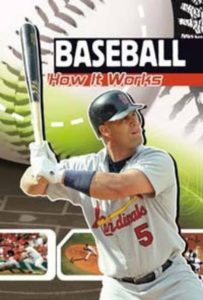 |
David Dreier’s Baseball: How It Works (Capstone Press, 2010) in the Science of Sports series, illustrated with color photos, diagrams, and sidebars, is an overview of the physics of baseball for ages 11-14, covering such concepts as velocity, inertia, gravity, acceleration, and torque. |
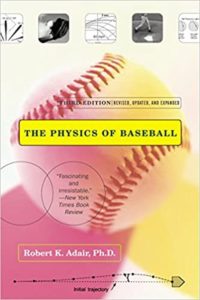
|
Robert Kemp Adair’s The Physics of Baseball (Harper Perennial, 2002) is an absorbing overview of the science behind balls, bats, pitching, catching, and throwing, illustrated with charts, diagrams, and graphs. It’s reader-friendly and studded with analogies and anecdotes, but it’s physics. Best for high-school-level physics students and up. |
| From the San Francisco Exploratorium, Science of Baseball has online experiments and demonstrations, instructions for hands-on activities, background information on baseball biology, physics, and statistics, an illustrated history of women’s baseball, and resource lists of books and interesting links. | |
| From the Smithsonian, check out the science (and math) of the stolen base. | |
| Younger brothers try to steal more bases than older brothers. Find out why here. |
